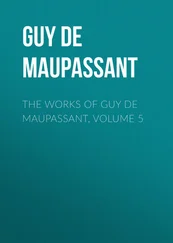Priestley had again been working on similar lines. He had shown that candles and mice lasted approximately five times longer in a jar of oxygen than in a jar of ordinary air. This is because ordinary air consists of one fifth oxygen and four fifths nitrogen, a gas which does not support life. Priestley said of oxgyen (or rather, as he called it, dephlogisticated air):
‘It is the ingredient in the atmospheric air that enables it to support combustion and animal life. By means of it most intense heat may be produced; and in the purest of it animals may live nearly five times as long as in an equal quantity of atmospheric air. In respiration part of this air, passing the membranes of the lungs, unites with the blood and imparts to it its florid colour, while the remainder, uniting with phlogiston exhaled from venous blood, forms mixed air.’
But if all the animals of the world are continually consuming large amounts of oxygen, why doesn’t the oxygen in the atmosphere run out, as it does in the jar? Priestley discovered that plants produced large amounts of oxygen when a light was shone on them, and went on to suggest that all the oxygen used by the animals of the world is produced by plants. This suggestion is more or less correct, although the photosynthetic bacteria and algae of the sea (also now classified as plants) contribute as well to the production of oxygen, and it would take over two thousand years for the atmospheric oxygen to run out if all plants stopped producing oxygen. So both the food we eat and the oxygen we breathe come ultimately from plants; this means all energy is derived from plants, who in turn get their energy from the sun.
But if animal respiration was a type of combustion, where within the animal did it occur? Lavoisier and Laplace believed it happened in the lungs. They thought that carbon (and hydrogen) derived from food was brought to the lungs by the blood, and was burnt there with the breathed-in oxygen to produce the waste products of carbon dioxide (and water) then breathed out; and heat, which was absorbed by the blood and distributed to the rest of the body. Their belief that respiration was the combustion of food using oxygen was correct, but they were wrong in thinking that this combustion occurred in the lungs. Their view prevailed for fifty years, although Lagrange, the famous French mathematician, argued that the combustion could not occur solely in the lungs because if all the heat were released there they would be burnt to a cinder. He postulated that oxygen was taken up by the blood and the combustion of food occurred within the blood. This theory was very influential and competed with that of Lavoisier and Laplace. But in 1850, it was found that a frog muscle, separated from the body, still takes up oxygen liberating carbon dioxide; subsequently it was shown that the liver, kidneys, brain and all the body’s other tissues do the same. In the 1870s, the role of blood was demonstrated to be solely the transport of oxygen from the lungs to the tissues, where respiration occurred within the cells, the blood then carrying back the carbon dioxide generated to the lungs. The colour change of blood, from blue-back to red on passing through the lungs, was due to a single component of blood, haemoglobin, which picked up oxygen. Haemoglobin carried oxygen in the blood: it picked up oxygen in the lungs (changing from blue to red), then carried it to the tissues, where it released the oxygen (changing back from red to blue). Thus respiration (or combustion) was occurring not in the lungs but all over the body.
But it was still not clear what relations, if any, respiration and its associated heat production had to life and its processes such as movement, work and thinking. Lavoisier and Séguin, a co-worker, had shown (using Séguin as the experimental subject) that respiration increased during work, after a meal, in the cold, and in deep thought. Thus, there appeared to be a relation between respiration and physiological work, but it was hard to imagine how oxygen consumption or heat production could cause the movement of an arm, let alone the thinking of great thoughts. To bridge that conceptual gap required the imagining of something entirely new, and that something was ‘energy’.
The collapse of the four elements theory opened up a cornucopia of matter. If ‘air’ was a mixture of different gases, ‘water’ was a combination of hydrogen and oxygen and ‘fire’ was not an element at all, then what on earth was ‘earth’? The science of chemistry, newly constituted and emboldened at the start of the nineteenth century, was salivating at the prospect of dividing ‘earth’ into thousands of different ‘species’. The concept of species and family had been successfully used by Linnaeus in the eighteenth century to bring order to biological taxonomy, but what were the building blocks of matter and how were they to be classified?
The theory of the elements was recast by Lavoisier, so that there were at least thirty different elements (now known to be about a hundred), existing as elementary, indivisible ‘atoms’ (proposed by Dalton in 1808) and combined in fixed ratios to form more or less stable ‘molecules’. Chemists divided their task between the analysis of inorganic and organic (or ‘organized’) matter, the latter being the constituents or products of living organisms. The alchemists had treated organic matter as if it were a single substance or a small number of elements, for example they had treated distillates of egg or urine as single substances. The chemists set about analysing the many components of egg and urine, using new methods of organic analysis. Lavoisier had pioneered such analysis by burning organic compounds in jars of oxygen and collecting the carbon as carbon dioxide and hydrogen as water. By quantifying the amount of carbon (C), hydrogen (H), and oxygen (O), a formula of the compound could now be written down; starch was, for example, thought to be C 12H 10O 10. This formula was mistaken, and arose from the misconception that water was HO rather than H 2O. But these methods were rapidly improved and applied with great enthusiasm by several German chemists, in particular Liebig and Wöhler. In 1835, Wöhler wrote: ‘Organic chemistry appears to me like a primeval forest of the tropics, full of the most remarkable things’. These first optimistic biological chemists did not, however, comprehend the full complexity and extent of their new field. It is now thought that there may be roughly five million different organic compounds in the human body and these compounds may be organized in an almost infinite number of different ways.
Nineteenth-century Germany, although not yet united, had become the major centre for scientific and technological innovation. Perhaps partly in reaction to the rise of science and industrialism, the Romantic movement developed in late-eighteenth-century Germany producing a scientific philosophy known as Naturphilosophie . This bizarre hybrid of Romantic philosophy and science contributed to a resurgence of interest in the vital force and the relationships between all forces.
Justus von Liebig (1803–1873) dominated German chemistry and biochemistry in the nineteenth century, sometimes to the detriment of biology. The son of a dealer in drugs, dyes, oils, and chemicals, von Liebig gained an interest in chemistry assisting his father. But he did badly at school and was derided when he suggested a career as a chemist. He learned to make explosives from a travelling entertainer, terminating an apprenticeship in pharmacy when he accidentally blew up the shop. His father packed him off to university to study chemistry but he was soon arrested and sent home after becoming too involved in student politics. Somehow he eventually earned his doctorate and went to work in Paris with one of the best French chemists of the time, Joseph Gay-Lussac. In the 1820s he took a position at a small German university at Giessen, and over the next twenty-five years produced a veritable mountain of chemical data.
Читать дальше












